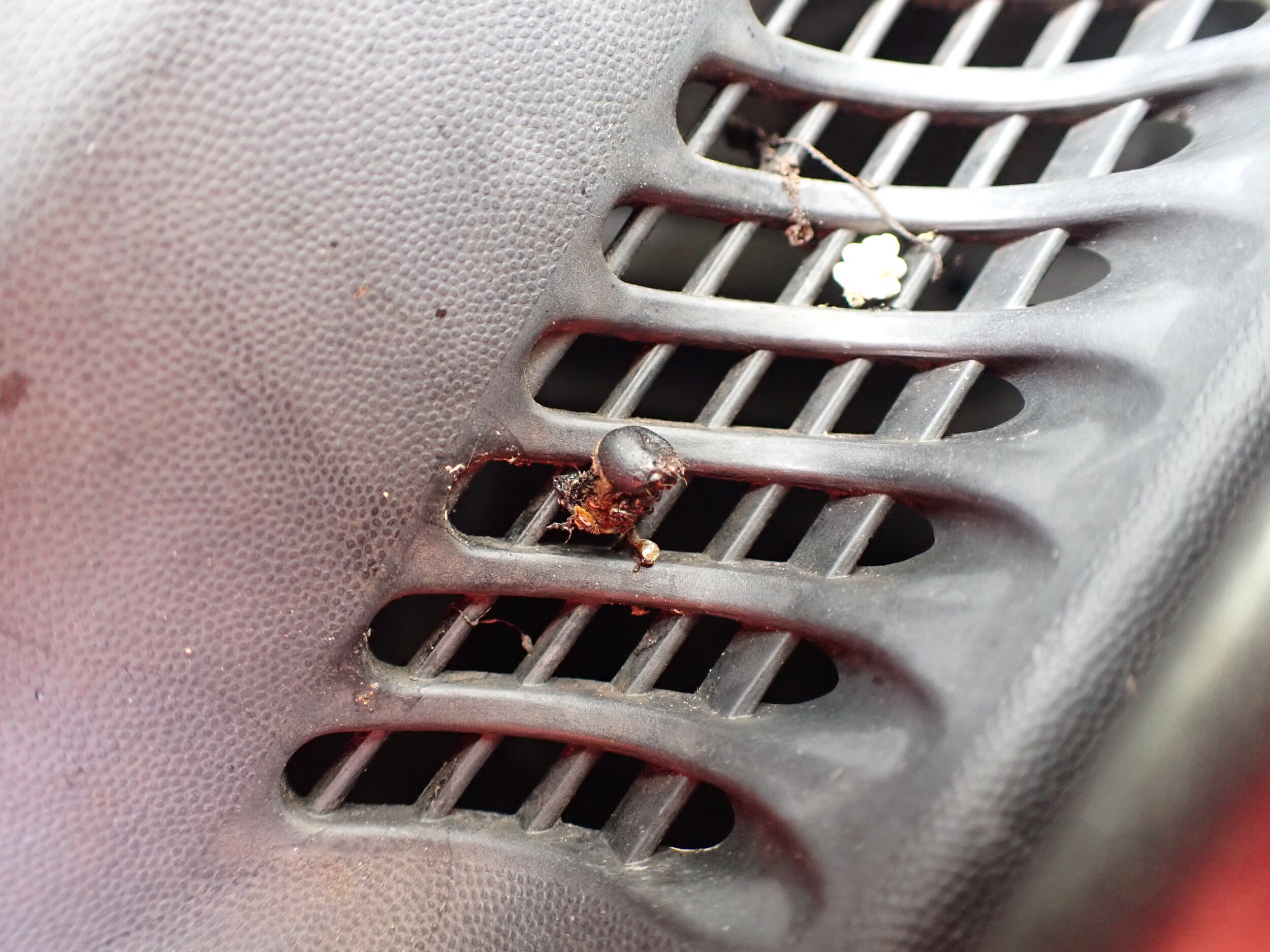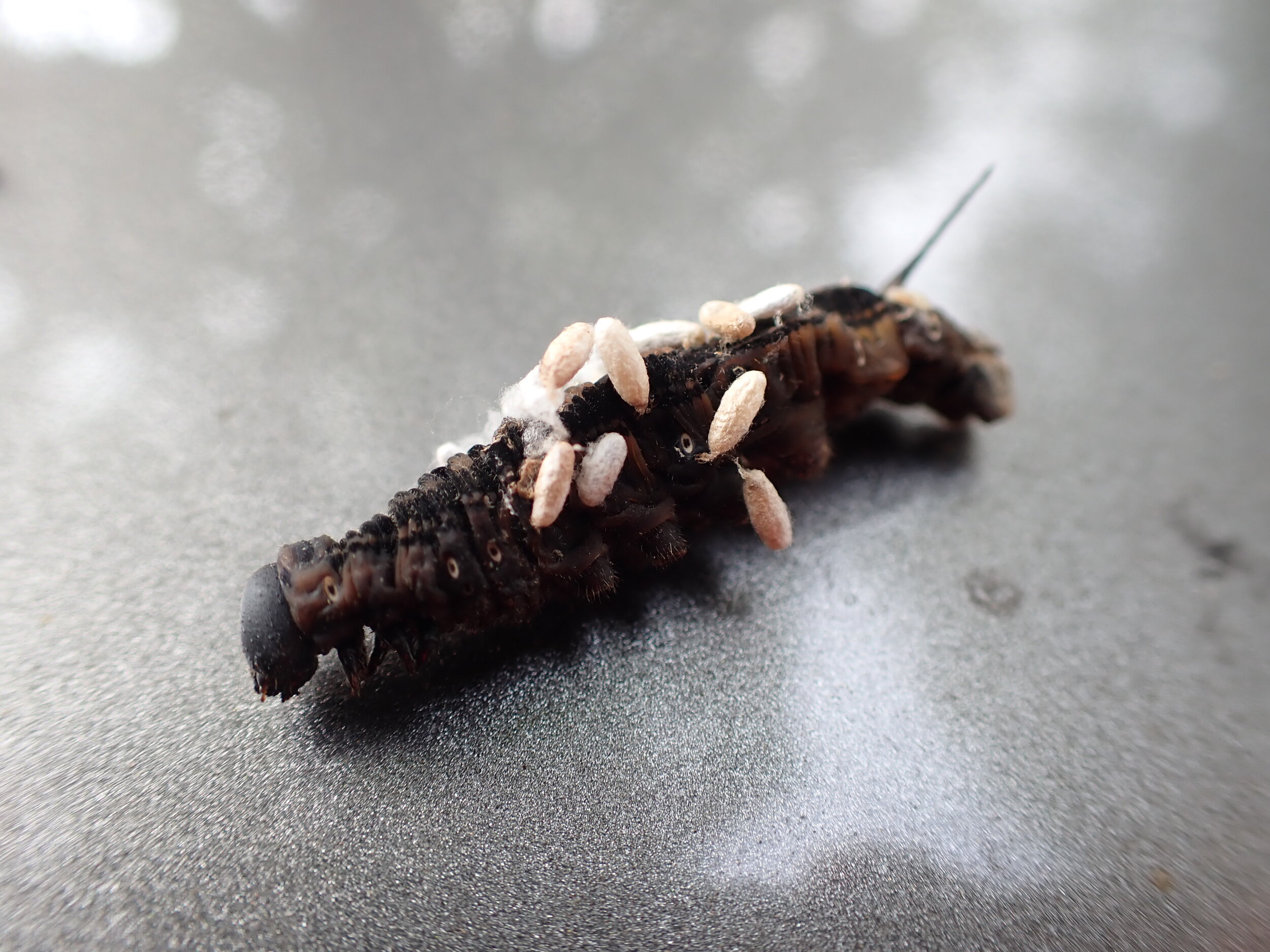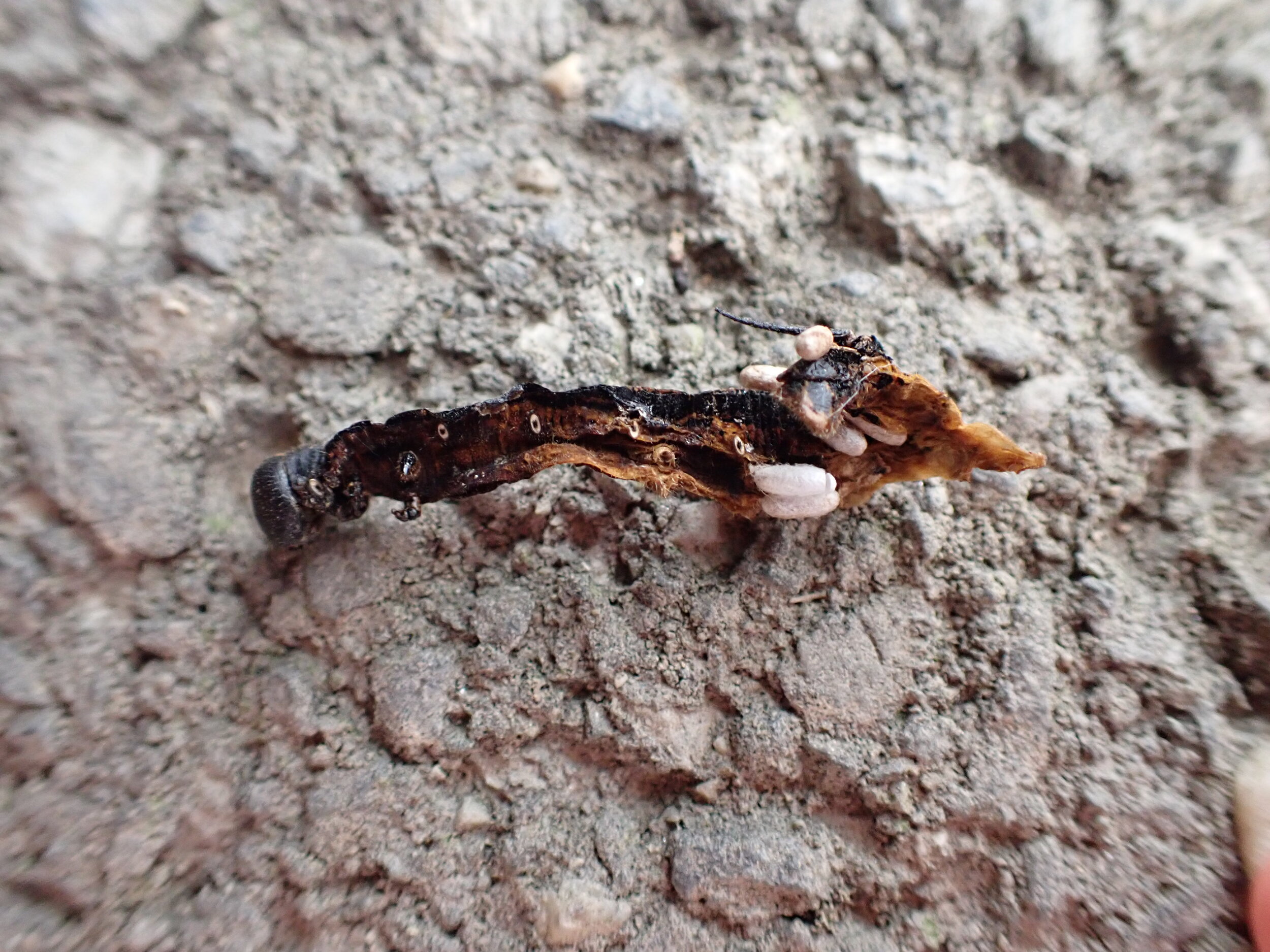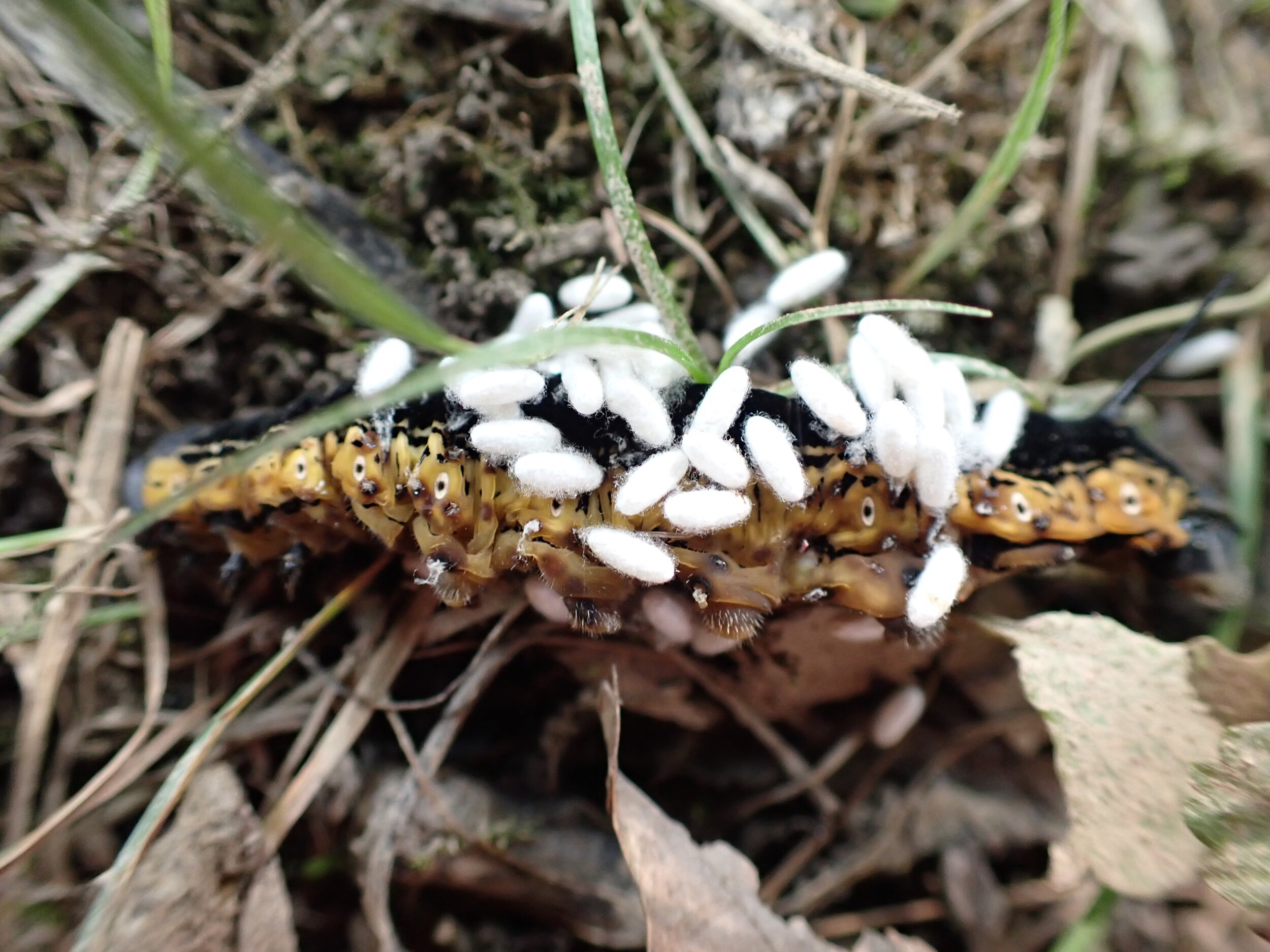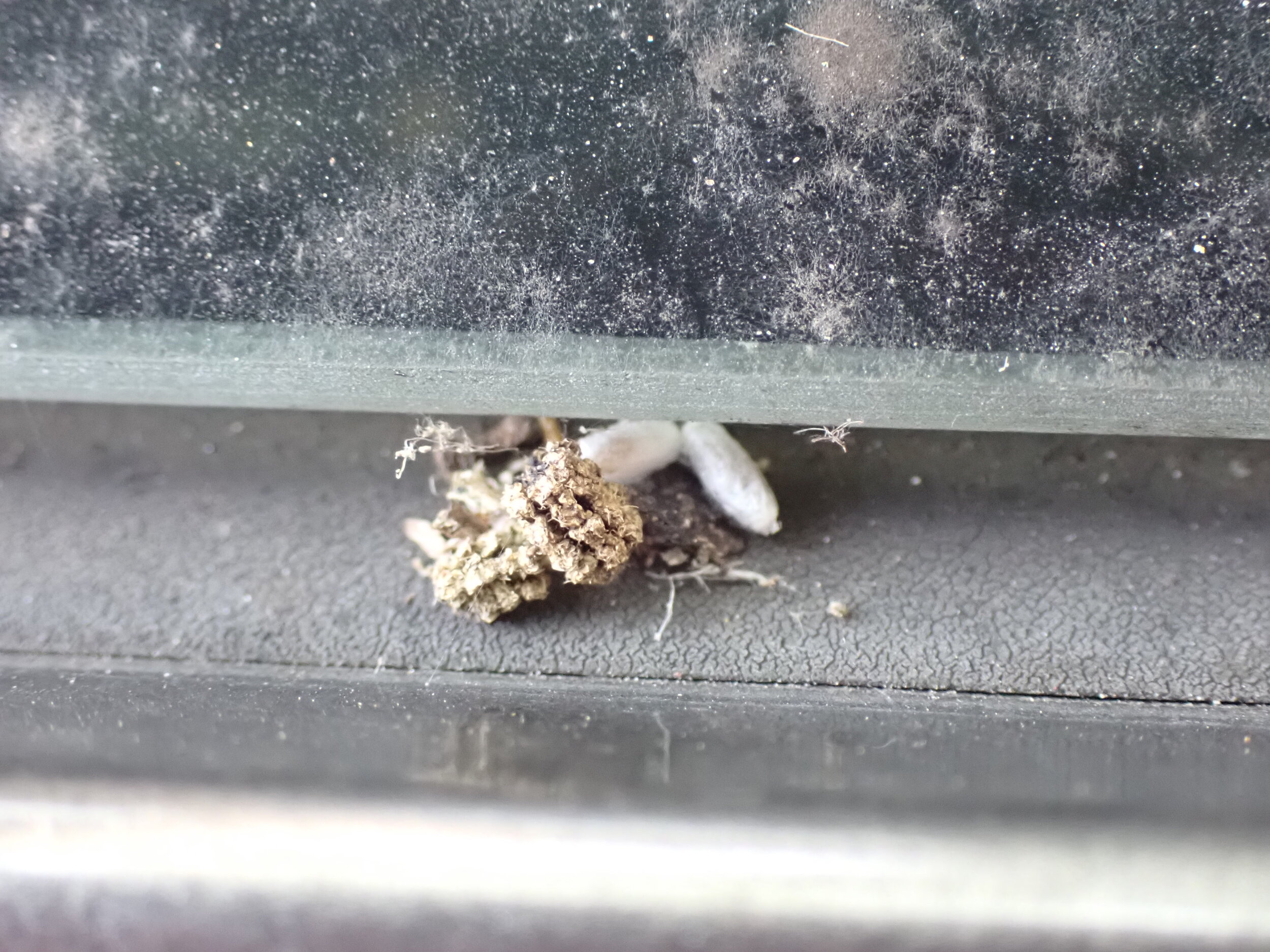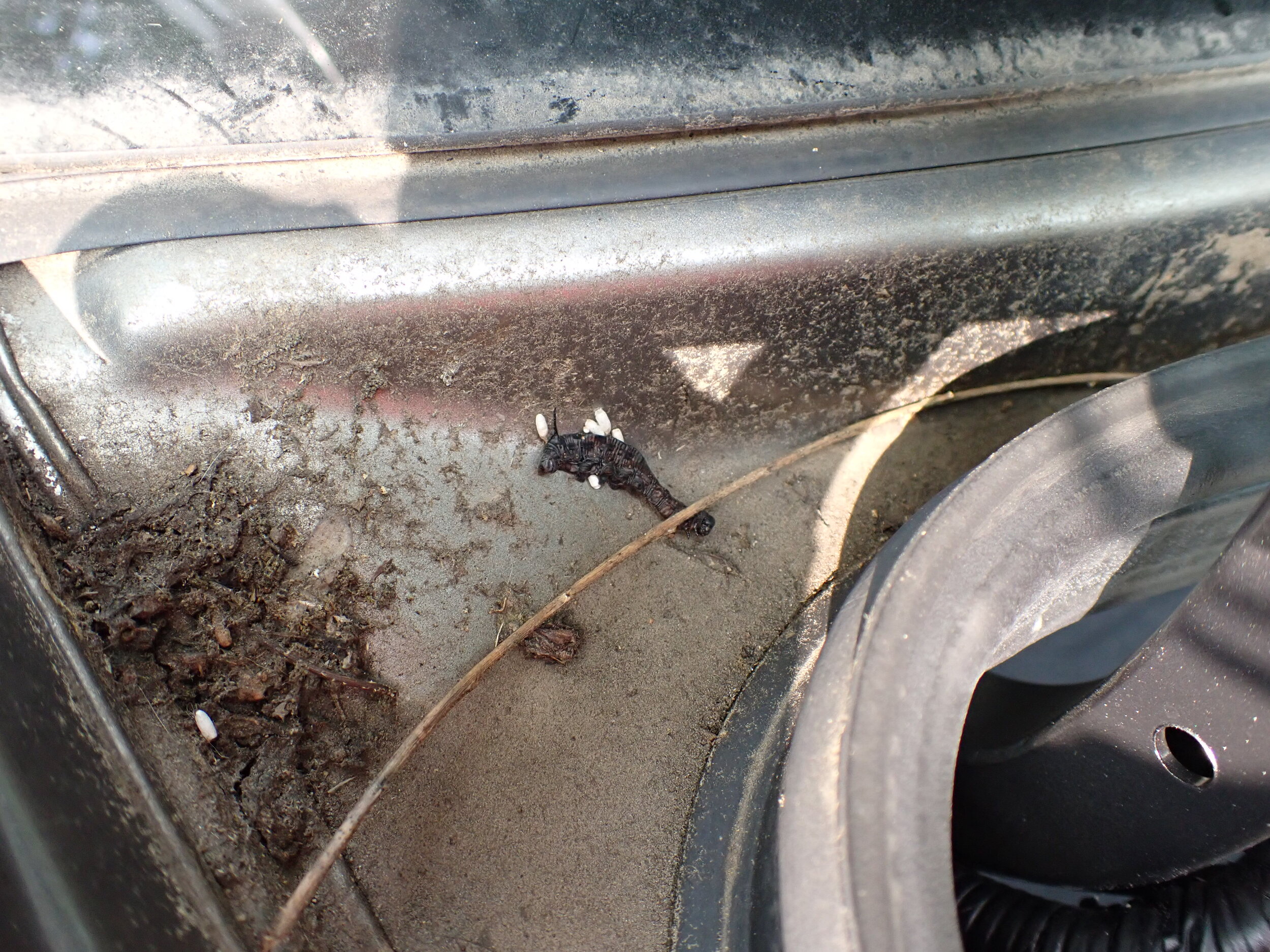My car is parked beneath a big catalpa tree. I loved my parking spot this summer because it was always shady, which prevented my car from becoming an oven midday. Now in the last week, I’ve noticed another perk of my parking spot: it provides me with a front row seat to one of nature’s annual dramas.
There are two species of catalpa (sometimes spelled catawba) trees native to the southeast United States, though they are also cultivated outside of their native range because they grow quickly and have showy flowers. They are easily distinguished by their long seed pods, which look a lot like string beans. Another delightful feature of catalpas is that they have very broad leaves, which are perfect for hiding behind.
Man hiding behind a catalpa leaf near Antietam National Battlefield. Photo credit: K. McGurrin
One day last week I was getting into my car and noticed a big yellow and black caterpillar on the windshield. It had a “horn” on its abdomen, indicating it belonged to the Family Sphingidae, and knowing that it had likely been feeding on the catalpa tree overhead led me to identify it as a Catalpa Sphinx, Ceratomia catalpae.
Late instar Catalpa Sphinx caterpillar. Photo credit: Judy Gallagher, CC BY 2.0, via Wikimedia Commons
Finding one beautiful caterpillar on my car was nice, but then each time I revisited it over the next several days I was finding more and more fallen caterpillars. Some were on the ground beside my car, one got wedged into the trunk hinge, a couple more were on the hood… it was a downpour.
In the course of doing research, our lab ends up saying and writing “caterpillars” a LOT- often enough that we feel the need to shorten the original four syllable word to “cats.” So at my house this week, it has been raining cats.
As you may have deduced from the title of this blog post, it has also been raining wasps at my house. As apocalyptic as that sounds, the wasps raining down here are tiny and harmless to humans. In fact, I never even saw the wasps themselves. Instead, the indicator of their presence was the abundance of white cocoons found on every fallen caterpillar.
While all wasps are important predators, parasitoid wasps are sneaky about their work. Adults will lay eggs in or on caterpillars, and for a while the caterpillars will continue functioning as normal. Then the wasp egg will hatch and gradually eat away at its caterpillar host, ultimately killing it (this is the difference between a parasite and a parasitoid). In this way, parasitoids are a form of biological control which prevent populations of caterpillars from becoming so large that they inflict serious damage to plants.
If you’d like to see more awesome/gruesome details on caterpillar parasitism, check out this video from the Caterpillar Lab:
In the case of my catalpa tree and Catalpa Sphinx caterpillars, the identity of the parasitoid wasp is most likely Cotesia congregate. Pupae are the wasp’s most visible life stage, as many of them are often clustered together on top of a caterpillar. This was exactly the part of the drama which I was witnessing under my catalpa tree. A subset (according to our preliminary data from BiodiversiTREE, around 6%) of the caterpillar population overhead had been parasitized by wasps, died, and slid off onto my parking spot below. By the time I found them, many of the wasp pupae had already hatched and the new generation of adults had flown off.
Three wasp pupae on the back of a Catalpa Sphinx caterpillar. All three are open at the top, meaning that the wasp has already emerged and flown away. Photo credit: K. McGurrin
Unfortunately, I can’t see the remaining (healthy) caterpillars from the ground. By looking carefully at the shape of the leaves overhead, I can see one branch with quite a bit of feeding damage.
Red circle highlights one area of the tree above my car with quite a bit of leaf tissue missing. This is likely from the feeding of many caterpillars. Photo credit: K. McGurrin
My guess is that the remaining caterpillars will soon finish eating in the treetops and crawl down the trunk to overwinter as pupae in the soil. Hopefully next summer I’ll have an encore performance of this drama, with each actor in their supporting ecological roles.
Written by Kelsey McGurrin, lab manager



